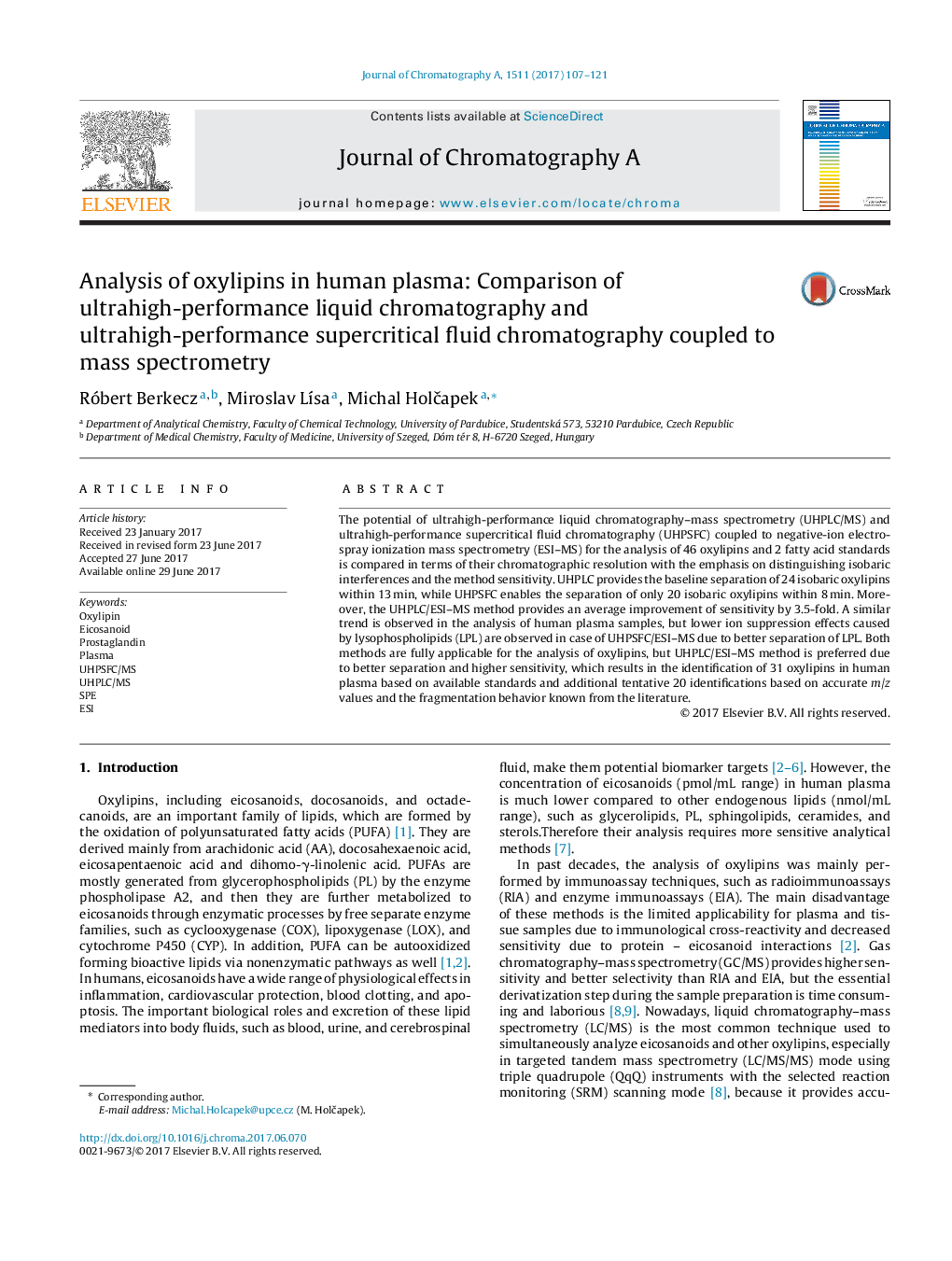| Article ID | Journal | Published Year | Pages | File Type |
|---|---|---|---|---|
| 5134902 | Journal of Chromatography A | 2017 | 15 Pages |
â¢Potential of reversed-phase UHPLC and UHPSFC for the analysis of oxylipins was compared.â¢UHPLC/ESI-MS provided better sensitivity, peak shapes and resolution of isomers.â¢Fragmentation behavior in negative-ion ESI-MS/MS applied for the identification of oxylipins.â¢Final UHPLC/ESI-MS method used for identification of oxylipins in human plasma extract.
The potential of ultrahigh-performance liquid chromatography-mass spectrometry (UHPLC/MS) and ultrahigh-performance supercritical fluid chromatography (UHPSFC) coupled to negative-ion electrospray ionization mass spectrometry (ESI-MS) for the analysis of 46 oxylipins and 2 fatty acid standards is compared in terms of their chromatographic resolution with the emphasis on distinguishing isobaric interferences and the method sensitivity. UHPLC provides the baseline separation of 24 isobaric oxylipins within 13Â min, while UHPSFC enables the separation of only 20 isobaric oxylipins within 8Â min. Moreover, the UHPLC/ESI-MS method provides an average improvement of sensitivity by 3.5-fold. A similar trend is observed in the analysis of human plasma samples, but lower ion suppression effects caused by lysophospholipids (LPL) are observed in case of UHPSFC/ESI-MS due to better separation of LPL. Both methods are fully applicable for the analysis of oxylipins, but UHPLC/ESI-MS method is preferred due to better separation and higher sensitivity, which results in the identification of 31 oxylipins in human plasma based on available standards and additional tentative 20 identifications based on accurate m/z values and the fragmentation behavior known from the literature.
